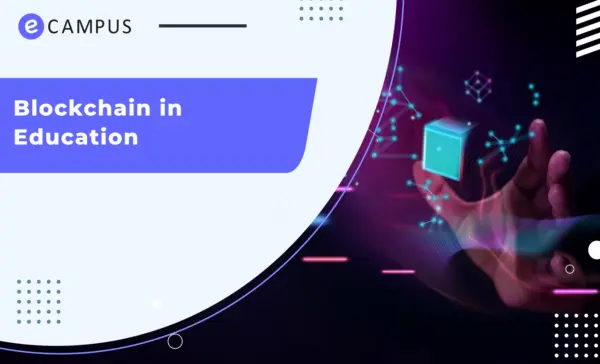Blockchain in Education
The impact of blockchain is being felt in several industries, including education. The education sector has been quick to embrace digitization during the pandemic and
Blockchain technology has the potential to revolutionise this sector.
Let’s explore what blockchain is and how it can impact education.
What is Blockchain ?
Blockchain is a recent development in computing that has interdisciplinary applications as well as a global scale and reach. To simplify the definition, a “blockchain” is a distributed database of records (or units of value) that a community can share. Blockchain is a young technology with countless potential applications that could change every aspect of our lives, including how we conduct transactions and keep records. Because blockchains are distributed, decentralised, and persistent information, analysts believe the technology has the potential to transform traditional transaction and data collection services. Although the possibilities for applying this technology in education are very promising, many people working in this field are not aware of all its benefits.
How can blockchain be used in education?
The education sector is one area where blockchain is only now gaining significance. The advantage of using blockchain technology in education is the security it provides for data and its ability to protect data at all costs. It would be a secure system that guarantees immutable education records.
Integrating blockchain into education can help maximise the use of human and material resources while increasing the efficiency of the education ecosystem. In this process, issues such as privacy, cost, scalability, and integration with legacy systems must be addressed. The benefits outweigh the costs, as they will lead to the development of a secure, open, collaborative, innovative, and sustainable education system that is better able to accommodate larger numbers of students.
Read More:- What will Education look like in the Metaverse?
Some areas of the education sector where blockchain could change the way things work are:
1. Managing student records:
- Currently, the most intensive manual work is the manual review of student records.
- For managing student data, including daily assignments, attendance, and extracurricular activities, as well as data on degrees and institutions attended, Blockchain technology can provide a suitable foundation.
- It would be a secure system that guarantees the immutability of educational data.
- Potential educational institutions and employers can rely on this data if they have access to the necessary records.
2. Issuance of certificates and diplomas :
- Converting paper degrees into digital diplomas or certificates using blockchain technology has the advantage of being less susceptible to damage.
- MIT graduates have been receiving digital certificates based on blockchain since 2017.
- By making documents available digitally, the risk of forgery can be significantly reduced.
3. Information storage :
- Current digital document storage has many limitations.
- To store important data such as syllabi, records, prescribed documents, and other information, institutions and universities can use blockchain-based cloud services.
- The document storage process has been greatly improved by blockchain-based services as they provide secure and convenient alternatives.
4. Creating lessons and courses :
- Smart contracts can also be implemented on blockchains. For example, a course instructor can develop a smart contract that lists the steps required to complete the course.
- Researchers can also benefit from blockchain technology and publish their research without much effort.
- The administrative and intellectual property rights of researchers are also guaranteed
- The lengthy processes of traditional publishing are avoided.
5. Transfer of records :
- By granting access to the blockchain, student records can be easily transferred when a student moves from one institution to another.
- By granting the appropriate access, this can even be extended to situations where the grades of students going to other institutions as part of exchange programs can be easily transferred across institutions.
Conclusion
By implementing blockchain technology in education, human and physical resources can be used as efficiently as possible. In doing so, issues such as privacy, cost, scalability, and integration with existing systems must be addressed. However, the benefits outweigh the costs by producing an education system capable of handling larger enrollments while being secure, open, collaborative, innovative, and sustainable. Networks of educational institutions and students are likely to reap the greatest benefits from blockchain-based technology in education. The ideal group for practical implementation are companies that serve numerous schools in a network and are already willing to experiment with innovative methods for educating and informing their students.



Leave a Reply